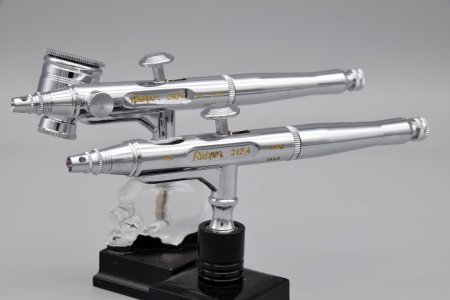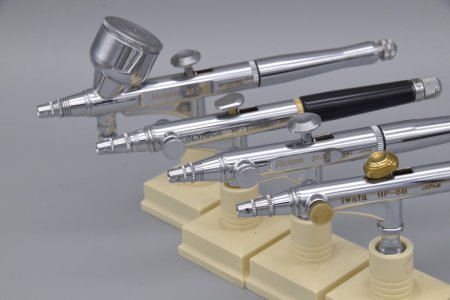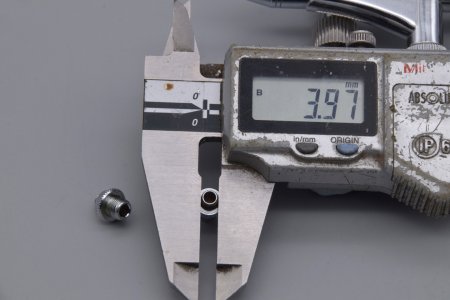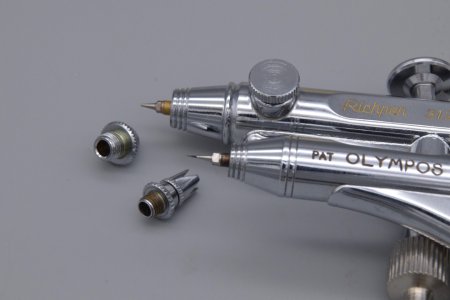Unlike many of the other Japanese brushes that originate from Fuso Seiki- while these brushes use similar construction, they are physically different. An Olympos Micron is the same as an Iwata Micron, minus a few key specs around the nozzle or nozzle cap, and needle. These brushes are completely different, although they will accept the same nozzles and needles - the bodies are larger diameter on these (12mm vs.11mm). Most of the threads are a different size, etc...
I have done some preliminary spray tests, and they work well. The Phoenix (the A Cup) will produce perhaps the finest line I have gotten out of a brush. All of the paper work included eludes to the brushes design aimed at working at lower air pressure, but I have not seen that to be necessarily true. At a decent medium pressure(using a MAC valve), it will produce a very nice, very fine line. In comparison, the lines created by an Olympos will appear a bit fuzzy, especially on the edges. Iwata, a bit thicker, and darker, but with very clean edges...
I'll be working more with these over the next few days.
 . They are made just like the Olympos SP series of brushes. They incorporate nozzle caps that are Micron like - however, they are not interchangeable with either Iwata and Olympos parts. The Richpen parts are larger diameter, and different threads. Attention to detail is evident, and the finishes seem to be extremely well done.
. They are made just like the Olympos SP series of brushes. They incorporate nozzle caps that are Micron like - however, they are not interchangeable with either Iwata and Olympos parts. The Richpen parts are larger diameter, and different threads. Attention to detail is evident, and the finishes seem to be extremely well done.







